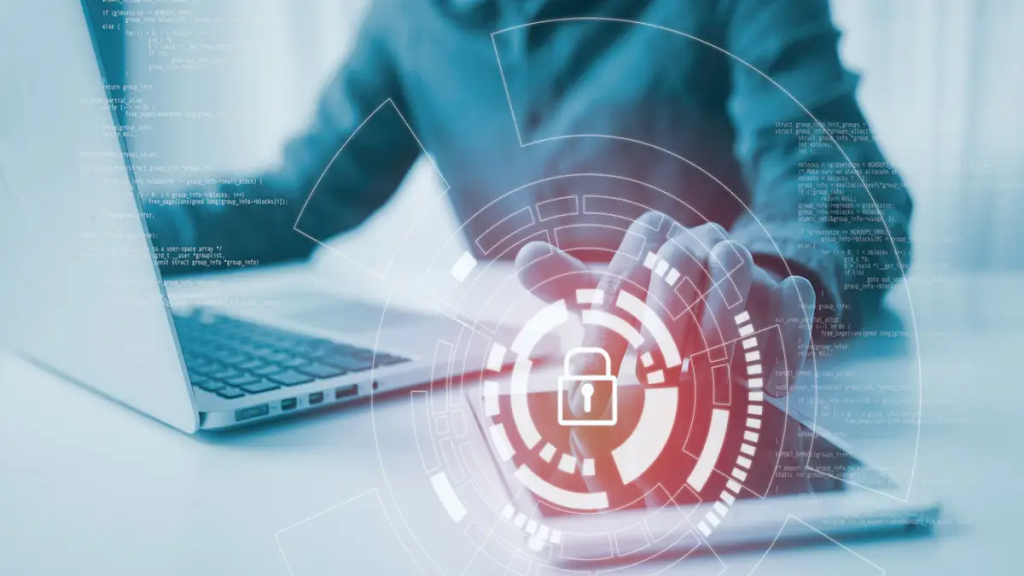End-to-end encryption works similarly to standard encryption in that it essentially jumbles data, rendering it unintelligible until it is decoded using a unique decryption key. Conventional client-to-server encryption works well for protecting data that is at rest in one place. Surely, there are many benefits of using end-to-end encryption.
The fact that end-to-end encryption is intended to protect data both in transit and at rest sets it apart from other encryption methods. Data and communications are susceptible to theft or interception when they are transferred between users or locations.
When data or communication is encrypted from beginning to end, it remains jumbled from the moment it is delivered until it is received. This is known as end-to-end encryption. Only the authorized receiver has access to the defined decryption key, which prevents any unauthorized party from reading the data they attempt to intercept.
Files being exchanged between users or coming from a central source are encrypted using end-to-end encryption. Additionally, text, phone, and video discussions between workers are encrypted using it. Encryption is maintained for all files and conversations, allowing for secure collaboration in addition to secure communications.
How End-To-End Encryption Helps Us

1. Enhanced Data Security
Among the primary benefits of using end-to-end encryption (E2EE) is its ability to enhance data security. E2EE ensures that data is encrypted on the sender’s device and only decrypted on the recipient’s device, meaning that it remains secure during transit. This significantly reduces the risk of interception by unauthorized parties.
In practical terms, E2EE means that even if data packets are intercepted, they are rendered unreadable without the proper decryption key. Popular messaging apps like Signal and WhatsApp utilize E2EE to protect users’ messages from prying eyes. This level of security is crucial for personal communications as well as for organizations dealing with sensitive information.
2. Privacy Protection
End-to-end encryption plays a vital role in protecting user privacy. By ensuring that only the intended recipient can access the data, E2EE prevents third parties, including service providers, from accessing sensitive information.
In a world where data mining and surveillance are prevalent, E2EE provides individuals with the ability to communicate and share information without the fear of being monitored. This is particularly important for journalists, activists, and whistleblowers who may be targeted for their communications.
For instance, during the Arab Spring, activists utilized E2EE to organize protests without fear of government surveillance. The encryption helped safeguard their communications and enabled them to operate more effectively.
3. Mitigation of Data Breaches
Data breaches pose significant risks to organizations, often resulting in financial losses, reputational damage, and legal repercussions. One of the top advantages of end-to-end encryption is that it helps mitigate these risks by securing data at its source.
When data is encrypted end-to-end, even if an organization’s servers are compromised, the information remains secure. This means that sensitive customer information, proprietary data, and intellectual property are protected from theft. By implementing E2EE, organizations can significantly reduce their vulnerability to data breaches.
A few years ago, the Equifax data breach exposed the personal information of 147 million people. Had E2EE been employed, the impact of such a breach could have been minimized, as the encrypted data would have been inaccessible to unauthorized users.
4. Compliance with Regulatory Standards
As data protection regulations tighten globally, organizations are increasingly required to comply with standards that mandate robust data protection measures. End-to-end encryption can help organizations meet these regulatory requirements.
Regulations such as the General Data Protection Regulation (GDPR) in Europe and the Health Insurance Portability and Accountability Act (HIPAA) in the United States impose strict guidelines on how sensitive data must be handled and protected. E2EE serves as a strong measure to ensure compliance, reducing the risk of legal issues and penalties.
By adopting E2EE, organizations not only protect their data but also build trust with their customers, demonstrating a commitment to privacy and security. This trust can enhance customer loyalty and improve brand reputation.
5. Protection Against Cyber Threats
The digital landscape is rife with cyber threats, including hacking, phishing, and ransomware attacks. One of the benefits of using end-to-end encryption is that it provides a robust defense against these threats by ensuring that data remains secure even in the event of a cyber-attack.
E2EE secures data transmission, making it nearly impossible for attackers to access the content of communications. Even if they manage to intercept data, the encryption renders it useless without the decryption key.
For example, in a ransomware attack, where attackers encrypt a victim’s files and demand payment for the decryption key, E2EE would prevent unauthorized access to sensitive files, thus thwarting the attackers’ efforts.
6. User Control Over Data
One of the top advantages of end-to-end encryption is that it empowers users by giving them control over their data. With E2EE, users hold the keys to their encryption, meaning they can decide who can access their information.
This level of control is essential in maintaining data sovereignty and ensuring that individuals are not reliant on third-party providers to safeguard their sensitive information. Users can share data with confidence, knowing that it cannot be accessed by anyone other than the intended recipient.
Services like Proton Mail offer E2EE, allowing users to send secure emails without worrying about unauthorized access. This user empowerment is crucial for maintaining privacy in an age of increasing digital surveillance.
7. Promoting Freedom of Expression
End-to-end encryption fosters an environment where individuals can freely express their opinions and share ideas without fear of censorship or retaliation. This is especially important in repressive regimes where free speech is under threat.
By protecting communications, E2EE enables activists, journalists, and everyday citizens to engage in discussions about sensitive topics, advocate for change, and report on injustices without risking their safety.
In countries with heavy censorship, such as China or Iran, E2EE allows users to communicate securely, share information, and organize protests. This can lead to greater societal change and increased accountability for governments.
8. Secure Collaboration
In today’s interconnected world, collaboration often involves sharing sensitive information across various platforms and with multiple stakeholders. End-to-end encryption provides a secure means for teams to communicate and share files.
For organizations, E2EE facilitates secure collaboration among employees, clients, and partners. By ensuring that only authorized individuals can access shared information, businesses can engage in more effective teamwork without compromising security.
Tools like Slack and Microsoft Teams have integrated E2EE features, allowing teams to communicate securely while still being productive. This balance between collaboration and security is essential for modern organizations.
9. Long-Term Data Integrity
Data integrity refers to the accuracy and consistency of data over its lifecycle. End-to-end encryption plays a critical role in maintaining data integrity by preventing unauthorized alterations.
When data is encrypted, it is protected from tampering, ensuring that it remains intact and trustworthy. This is especially crucial in sectors such as finance and healthcare, where data accuracy is paramount.
For instance, in the healthcare sector, patient records protected by E2EE can help ensure that sensitive information remains confidential and untampered, thereby maintaining trust between patients and providers.
Wrapping Up
The benefits of using end-to-end encryption are multifaceted, ranging from enhanced data security and privacy protection to compliance with regulatory standards and the promotion of freedom of expression. As the digital landscape continues to evolve, the need for robust security measures like E2EE will only grow.
Adopting end-to-end encryption is not merely a technical choice; it is a commitment to protecting individuals’ rights and fostering a secure, open environment for communication and collaboration. For organizations, it is a vital strategy for safeguarding sensitive information and maintaining customer trust.
Ultimately, the use of end-to-end encryption is essential for navigating the complexities of the modern digital world, ensuring that privacy and security remain at the forefront of our interactions.
FAQ
Q: What is the protection provided by end-to-end encryption?
A: E2EE provides end-to-end encryption, which helps ward against hackers and data intrusions. It provides a strong layer of protection and guarantees that only authorized parties may access communication content, making it very difficult for threat actors to compromise important data.
Q: End-to-end encryption: is it observable?
A: Because only the sender and receiver have the keys to encrypt and decode the message, data sent via E2EE is encrypted on the sender’s device and is only ever decrypted on the recipient’s device, never in the cloud. Consequently, the material is inaccessible to attackers monitoring Internet traffic or breaking into a server.
Q: What are end-to-end encryption’s limitations?
A: Messages are kept safe in transit (as they go from one person to another) using E2EE. However, once communications get to their destination, they are no longer protected.






